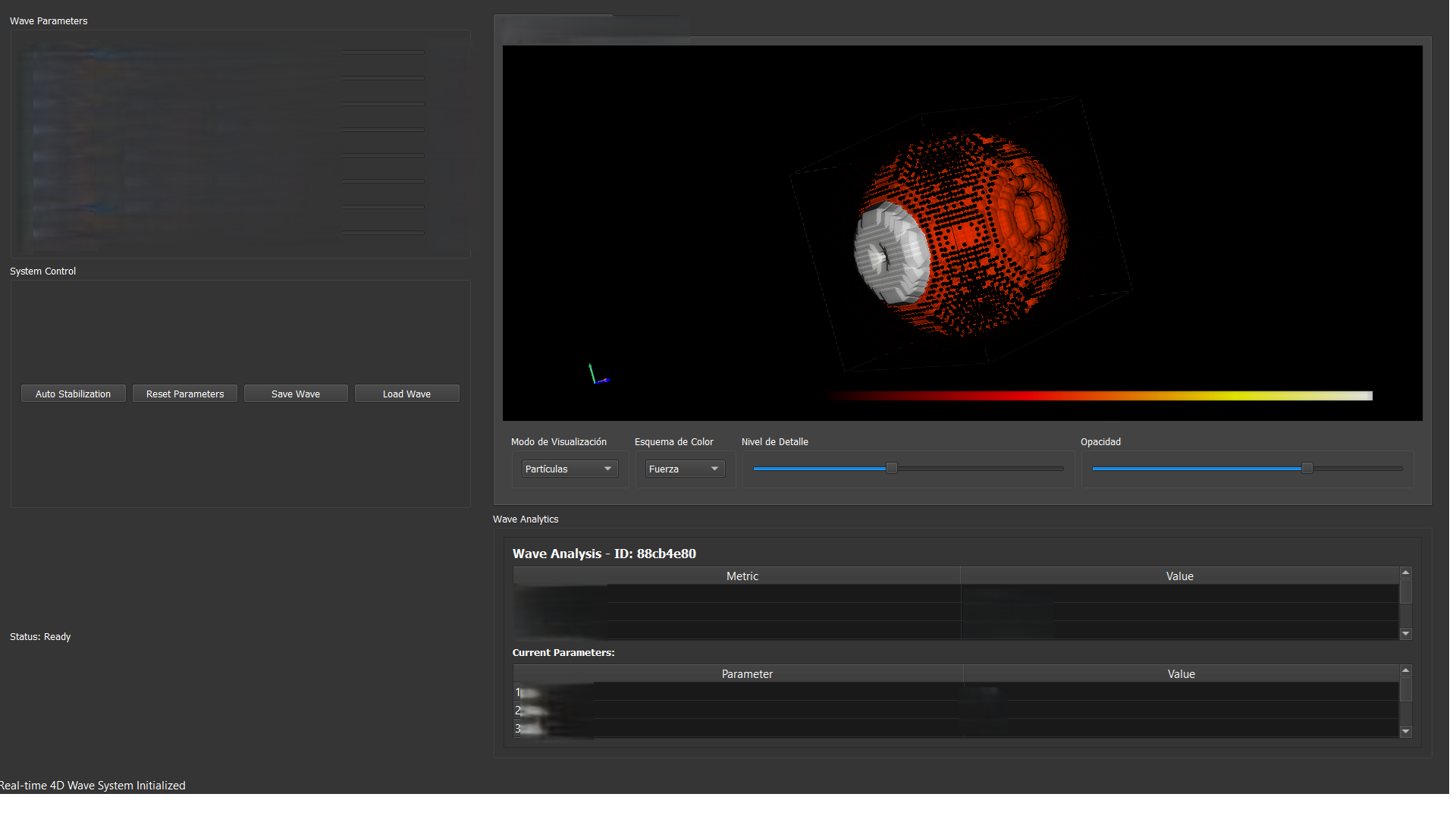WaveDigit System
Interactive exploration of wave communication, advanced visualization, and physical control through waves
Welcome to the WaveDigit System
WaveDigit is an advanced communication and control system based on fractal wave patterns. This interactive presentation will show you three fundamental aspects of the system.


Press "Start Presentation" to begin the automatic demonstration or select a specific window to explore it.
Wave Communication Simulation
Press "Start Simulation" to view the demonstration
Window 1 shows the basic communication between two agents using waves. Agent A (emitter) transmits commands encoded in wave patterns that travel to Agent B (receiver).
Commands are encoded using parameters such as amplitude, frequency, decay, fractal complexity, and iterations, visualizing in real-time how these patterns propagate through space.
The side panels show activity logs from both agents, allowing you to understand the encoding and decoding process of the information.
Advanced Wave Field Visualization
Press "Start Simulation" to view the demonstration
Window 2 presents an advanced visualization of the complete wave field using dynamic heat maps. It uses the HQFL system for denser and more precise information encoding.
This visualization allows you to observe the two-dimensional propagation of waves, pattern interference, and perform detailed physical analysis of signals (phase, symmetry, magnitude).
The emitter and receiver agents process and analyze the data in depth, showing technical information about encoding and decoding.
Physical Control Through Waves
Press "Start Simulation" to view the demonstration
Window 3 shows how waves can exert physical effects on objects in a 3D environment. Objects physically react to the impact of waves, showing effects such as displacement, rotation, elevation, and resonance.
The behavior of objects is controlled through sliders that adjust parameters such as amplitude, frequency, fractality, and other wave properties.
This simulation allows you to directly experience how waves influence the physical environment, demonstrating potential applications in robotics, haptic interfaces, or distributed systems.